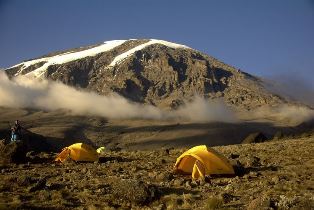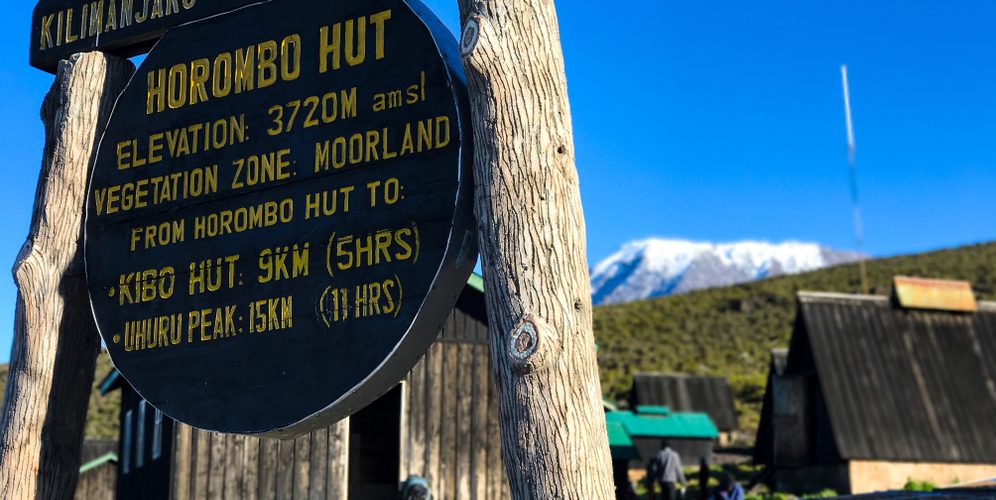Camp Accommodations
There are designated campsites for each Kilimanjaro route.
The Kilimanjaro National Park Authority maintains the campsites in the park. These are designated areas for camping; you are not allowed to camp outside of them.

One thing to be prepared for is the sheer size of these sites. While some are small are relatively quiet, others are sprawling spectacles consisting of a sea of tents. The campsite areas make the most of the available terrain, with some having precarious steps for the unsuspecting hiker. Most have a metal hut that the park rangers stay in.
If your operator does not carry a private toilet for you, then you need to use the public “long drop” toilets. These are made from deep holes dug into the soil, covered by a wooden structure. A hole cut into the wood planks is where the urine and feces drop into. It is advisable that you familiarize yourself with the location of toilets before dusk.
There is no running water. Water is provided by your operator. It is for personal washing but remember to use sparingly and keep in mind that there is no place ANYWHERE on any route to dump garbage. All trash is carried back down the mountain to the gate by the porters. This is a large volume of garbage for each group so be mindful of what you are throwing away. Each climber should carry a small plastic bag to collect personal garbage and give it to the porters at the end of each day.
The Marangu Route is the only trail that has hut accommodations.
Dormitory style mountain huts exist on the Marangu Route. There are three main huts (Mandara Hut, Horombo Hut, and Kibo Hut), spaced a day’s walk apart. Each of these huts are surrounded by a virtual village of buildings, and the names refer to the old huts that existed long before the other structures were built. Some of the additional buildings are for porters and guides to sleep in; others are for park officials. Tourists generally sleep in the original huts which are in fairly good condition.

Reservations must be made at the park offices at the Marangu Gate. Your outfitter will arrange these reservations for you as part of your climb. When you arrive at each hut complex on the Marangu Route, your guide will go to the ranger’s office to show your reservations. They will help you find your hut and sleeping quarters.
There are 60 bunk beds each at Mandara Huts and Kibo Huts, and 120 bunk beds at Horombo Hut. However you need to bring a sleeping bag and sleeping pad.
At both Horombo and Mandara Huts, there are separate facilities for washing—small bathroom buildings, with cold showers and toilets. The toilets at Kibo Hut are like toilets on other routes on the mountain—big earthen pits. There is no natural water supply at Kibo Hut, so there are no showers. Cooking is always done outside by your crew.
Rongai route climbers who join Marangu route for the summit attempt and for descent do not have access to the huts for sleeping.
Campsites on the Mount Kilimanjaro:
- Big Forest
- Simba
- Shira
- Machame Moir
- Buffalo
- Lava Tower
- Arrow Glacier
- Barranco
- Umbwe
- Millenium
- Mweka
- Horombo
- Mandara
- Kibo
- Barafu
- School
- Rongai Cave
- Rongai Second Cave
- Rongai Third Cave
- Kikelewa Caves
- Mawenzi Tarn
Huts on Mount Kilimanjaro
- Mandara Hut
Capacity / Beds: 60 - Horombo Hut
Capacity / Beds: 120 - Kibo Hut
Capacity / Beds: 60